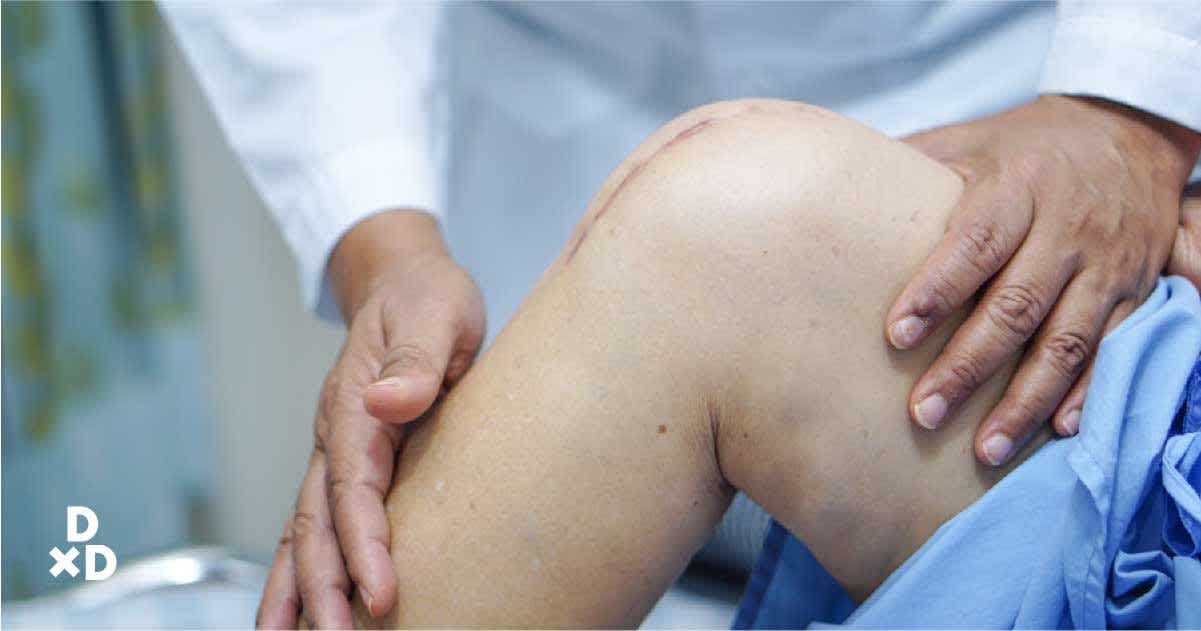Having hip problems which prevent you from performing your daily activities such as walking, sitting or sleeping? Join us in our webinar as we explore the different types of hip problems and the various treatments available to alleviate the pain.
Title: Consult an Orthopaedic Surgeon: Hip Problems, Pains and Aches
Date: 14 April 2021
Time: 8pm
Register here: https://bit.ly/3diQaFb
Orthopaedics is a field of medicine that’s in high demand and most Singaporeans, at one point or another, would probably have visited an orthopaedic surgeon.
Who are they and why you should see one? What makes for a good orthopaedic surgeon, and how much do you have to pay for various treatments? Read on to find out.
What is Orthopaedics?
In simple terms, orthopaedics is a department of surgery that deals specifically with musculoskeletal conditions [1].
Specialists in the field of orthopaedics use a whole range of treatment modalities to help restore function and relieve pain for patients, such as:
- Surgery
- Physical therapy
- Medications
- Minimally-invasive operations
How much does it cost to see an orthopaedic surgeon in Singapore under private vs subsidised care?
Cost*
Public (Ward B2)
Private
(Single)
$5,000-$8,000
$8,500-13,000
Total Hip Replacement
$6,000-$9,300
$8,550-$12,850
Partial Hip Replacement
$4,400-$7,300
$6,400-$9,100
Arm Re-alignment & Repair of Fractures
$2,100-$2,700
$6,300-$8,550
Repair of Ligaments in Knee
$2,800-$4,900
$7,500-$10,700
*Assuming no serious complications
The main concern many have when looking for a medical specialist is the fees that will be consultation and treatment fees.
There is little doubt that going to a polyclinic and getting referred to a hospital orthopaedist will cost you significantly less if you are a Singaporean or PR than booking an appointment with a private orthopaedist.
For example, a consultation with a public orthopaedic surgeon may range anywhere from $30-60 after subsidies and a consultation with a private one usually ranges from $90-150.
Most procedural fees will be at least 1.5-3x more expensive in private clinics and hospitals as compared to a public one. So if the cost is a major issue, going the public route will be your best bet.
Can you claim insurance or Medisave?

Yes. Medisave covers hospitalisation expenses such as:
- Daily wand charges
- Doctor’s attendance fees
- Surgical procedure
- Inpatient charges for medical treatment, investigation, medicines, medical supplies, and implants, etc.
The government also has many subsidies to help you pay for the treatment:
- Medisave: Surgery up to $5000 depending on the type of surgery undertaken.
- Medishield: The basic life insurance operated by CPF. it is aimed to subsidise your treatment fees so you have to use less of your MediSave.
- Medifund: The safety net set for patients who cannot afford treatment even after MediSave and MediShield.
- Medication Assistance Fund is available to pay for certain drugs that are not in the Standard Drug List. It depends on your prescription, so do ask your doctor.
When should you see an orthopaedic surgeon?
Orthopaedic surgeons treat all kinds of conditions involving your bones and your muscles.
But it isn’t prudent to always ring up your orthopaedist every time you suffer a strain from playing badminton or wake up with some aches on the wrong side of the bed.
Common injuries such as muscle strains from twisting your ankle or overexerting yourself at a soccer match are usually minor injuries which your body can handle on its own.
General practitioners (GPs) that are found all around your neighbourhood have more than enough expertise to help you with your recovery. The methods involved include:
- A prescription of icing
- Rest
- Pain or anti-inflammatory medications.
Normally, these soft tissue injuries will take no longer than 1-12 weeks to heal, depending on the severity of the strain.
If these injuries do not heal after 12 weeks, it may be prudent to revisit your GP for a referral to an orthopaedic surgeon or look for one yourself [2].
Should I see a GP first or go directly to an orthopaedic surgeon?
Apart from common injuries, there are several instances when you should be seeing an orthopaedic surgeon right from the get-go.
Fractures and broken bones
Minor fractures are often undetectable and may only present with pain, indistinguishable for muscle pain. The difference is that this pain does not get any better and continually worsens, especially when performing load-bearing activities.
Major fractures and broken bones are usually more noticeable, during which the patient experiences severe, excruciating pain. Bone might be pushing out against or puncturing the skin. These cases are often seen in road traffic accidents [3].
Dislocations
Most of us understand what dislocations are.
In layman terms, it’s when your bone pops out of its joint. These injuries are commonly seen in contact sports such as rugby, judo etc or once again, road traffic accidents.
Many times, they aren’t extremely severe, but they definitely need to be looked at by a professional to perform a joint reduction a.k.a “popping the joint back”.
You will also need some form of immobilisation and radiographic imaging to make sure all is well since dislocated joints have a higher chance of dislocating again [4].
Torn Muscles & Ligaments
Perhaps the most noticeable difference between a muscle strain, partial tear, and complete tear is the loss of function.
Strains are moderately painful, but you can still muster up sufficient strength to move and wriggle about.
Tears, on the other hand, are so severe that people may notice a “pop” when the tendon or muscle tears and severe pain that is debilitating when even attempting to use the muscle.
These are most commonly seen in athletes, whose sudden exertion of force results in a sudden tear of their muscles and ligaments, like the infamous ACL tear [5].
Bone Tumours
Tumours of the bone, whether benign or malignant, must be seen by a multidisciplinary team, involving oncologists and orthopaedic surgeons.
Tumours do not always present as lumps and bumps so it may not be obvious to you, but they may be picked up as incidental findings when you go for your regular checkups and X-rays (or even a visit to the dentist).
Fortunately, bone tumours are rare in Singapore [6].
Back Pain
Chronic back pain lasting more than 3 months should be managed by an orthopaedic surgeon.
Research has shown that orthopaedists manage back pain very differently compared to general practitioners.
Orthopaedists use more imaging methods and tests, such as MRIs and X-rays, to come to a more definitive diagnosis and treatment plan [7].
Age-related Conditions
The biggest age-related condition we see in Singapore is osteoporosis, especially affecting post-menopausal women.
Osteoporosis sounds like a common condition, but it is a severe one where your bones get progressively brittle if not treated early on.
Brittle bones, an ageing body, and an accidental fall can prove to be a lethal or disastrous combination that could lead to either death, or immobility.

Where can I see an Orthopaedic Surgeon in Singapore?
If you’ve come to the conclusion that you need an orthopaedist to manage your condition, where do you find one in Singapore?
The first choice you need to decide upon is whether you want to go the public route or the private route.
Waiting Time
The biggest issue with going the public route is the time needed to get an appointment with an orthopaedic surgeon.
Going by the public route will mean having to visit a polyclinic and waiting a fairly long time there.
Then you need a letter of referral to see an orthopaedic surgeon in around 2 weeks to 2 months.
Finally, you need to arrange for scans such as MRIs or surgical procedures, which could take as long as 6 months.
So coming to a diagnosis or treatment with the public sector could take you well up to a year from your first complaint to your final treatment.
On the other hand, getting an appointment with a private surgeon can be done usually within a week, scans and treatments can also be booked within 1-2 weeks since private clinics are less packed and overloaded with patients.
If waiting is an issue for you, private clinics are the way to go.
Choosing Your Doctor
It’s pretty clear cut here. If you want to choose your doctor, you have to head to the private sector.
If you decide to choose your doctor in a public hospital, you will be charged private rates, which is equal to that or even more than that of a private hospital.
Experience
Public hospitals often retain the best and the brightest surgeons and doctors in our public sector are highly-trained and skilled.
The best surgeons are retained in public hospitals to educate residents and surgical trainees.
However, that also means that since you don’t have a choice of a surgeon, you may be taken care of by a junior surgeon or a resident.
Although well-trained, there is a significant chance you may get an orthopaedist who has not clocked up a significant experience under his belt yet.
In contrast, a private orthopaedist usually has left the public sector after many years of experience.
Facilities
Private clinics and facilities are more lush and posh, that’s what you pay for after all.
But when it comes to actual medical equipment, sometimes public hospitals may have better facilities to deal with severe conditions such as bone tumours and cancers since they have greater sources of funding from the government.
Furthermore, a comprehensive team of radiologists, pathologists, and oncologists often work in a seamless fashion in public hospitals to help you deal with conditions that require a multidisciplinary team.
So if your condition is extremely severe e.g. bone cancer, the public hospitals are well-equipped to handle your needs, if it’s a less severe condition such as a total knee replacement, private hospitals can help you out in a comfortable and efficient manner.

Which Orthopaedic surgeon should I see?
If you choose to head to the private sector, you’ll find a wide variety of orthopaedic surgeons.
Firstly, choose a doctor whose subspecialty is related to your chief complaint. For instance, if you’re having knee problems, look for a surgeon specialising in hip and knee issues.
A list of some subspecialties
Here are the few notable subspecialties in the field of orthopaedics:
- Knee and Hip
- Spine
- Shoulder & Elbow
- Hand & Wrist
- Feet & Ankle
- Musculoskeletal Tumours
- Pediatric orthopaedics
Experience & Credentials
One thing you may want to look out for is a surgeon’s years of experience, which can be calculated based on their graduating year from their residency or masters programme and their qualifications.
Most surgeons will have an MBBS or MD indicating their basic medical degree, followed by an FRCS or FRACS title which indicates their fellowship in whatever field of discipline they specialised in. FRCS are surgeons with fellowship qualifications from the UK and FRACS are fellowship qualifications from the Australians.
Some of these surgeons have been well-respected and accomplished in the academic field as well, and they may have publications under their names and are usually displayed on their website.
Publications indicate that these surgeons are relatively academic compared to their peers.
Some of them are also awarded titles as Associate Professors or Professors, indicating a high level of respect and accomplishment in their respective speciality.
Titles highlight the accomplishments of a surgeon, but it is equally important to check out their reviews.
Good surgeons are not only smart and skillful but have the ability to have good bedside manners and have a caring attitude.
An overview of the most popular orthopaedic treatments in Singapore
1. Total Knee Replacement
- Total knee replacements also known as TKR is perhaps the most popular orthopaedic surgery done in Singapore.
- We know that Asians have a much higher risk of developing osteoarthritis (OA) in the knee as compared to Caucasians [8].
- NUH also reported that females are also 10 times more likely to develop knee OA compared to males.
- The knee joints are replaced with artificial metallic, ceramic, and plastic components to replicate a natural knee joint, aimed at giving you a better range of motion and less pain.
2. Total Hip Replacements
- Hip joints are commonly injured or damaged in elderly patients, especially those who develop osteoarthritis. Although less common than knee replacements in an Asian population, it is still one of the most common joints that require replacement due to ageing.
- The principles of hip replacements are similar to that of knee replacements.
3. Hyaluronic Acid Injections
- As we age, the fluid found between our joints experiences some wear and tear. For some, this occurs faster than others. As a result, pain often ensues when there is insufficient cushioning between the joints and bone begins grinding on bone.
- A relatively new and novel technique that has been employed is viscosupplementation. This aims to inject a natural gel-like substance into your joints, which replaces the worn off synovial fluid. As a result, one would expect better joint function thanks to the extra lubrication and cushioning [9].
3. Ligament Repair/Reconstruction
- Torn ligaments are very common in athletes involved in contact sports. Rugby players, basketball players, and many more often rupture their ligaments such as the ACL.
- Surgical treatments such as ACL reconstructions are recommended for younger patients. It works by harvesting a tendon from another joint in your body and reconstructing the ACL with it [10].
4. Management of Complicated Fractures
- Severe trauma often results in a bone fracture. Minor ones can heal by themselves with the help of rest and immobilisation.
- Major fractures require fixation and reduction. This means that bones have to be held together by screws, plates and other prostheses as they heal. They are often invasive and more expensive.
5. Osteoporosis
- Ageing often results in an increase of bone porosity, especially in women at post-menopausal age.
- Hormone replacement therapies, calcium & vitamin supplementation, as well as the use of antiresorptive drugs, are the way to go for dealing with this common ailment.
Conclusion
Remember that if you have a minor injury, you can see a GP for treatment. This reduces waiting time and is cheaper than seeing a specialist!
Of course, if you have any serious issues, it’s best to find an orthopaedic surgeon right away to reduce the chances of complications.
